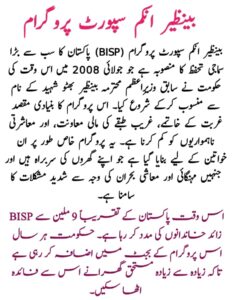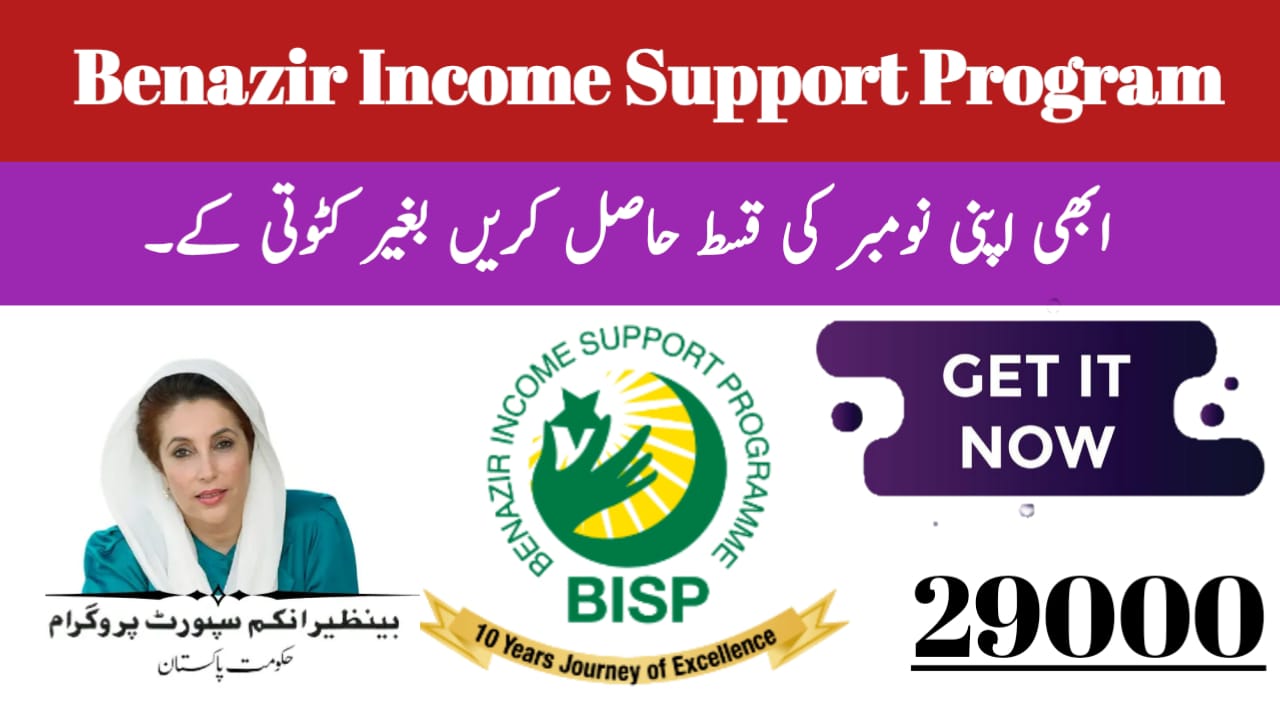Benazir Income Support Programme (BISP) 2025. Launched in July 2008, the Benazir Income Support Programme (BISP) stands as Pakistan’s flagship social safety-net initiative. Designed to protect the most vulnerable households from economic shocks, the program not only delivers cash assistance but also advances women’s empowerment, school attendance, health access and social inclusion. bisp.gov.pk+1
At its core, the program seeks to smooth consumption for families living below the poverty line, especially during periods of food inflation, economic downturns or natural disasters. bisp.gov.pk+1 Beneficiaries are primarily women, typically female heads of households, making BISP an important instrument for rural and urban female empowerment.
Targeting the vulnerable with transparency
BISP uses the National Socio-Economic Registry (NSER) and a proxy-means test (PMT) to identify the poorest households across Pakistan. This approach allows the government to focus support on families with limited assets or income, regardless of region, ethnicity or political affiliation. Once eligible, the female beneficiary receives quarterly cash transfers under the “Benazir Kafalat” scheme, among others. Punjab Government Schemes 2025+1
By directing payments to women, BISP helps strengthen their role in household decision-making. It also reduces financial exclusion by leveraging biometric verification, bank and digital-wallet systems so that funds reach the intended recipients safely. International Growth Centre
Multiple programmes under one roof
While the unconditional cash transfer forms the backbone, BISP also integrates conditional programmes:
- The “Benazir Taleemi Wazaif” education stipend promotes school enrolment and regular attendance of children from low-income families.
- Health and nutrition interventions support mothers and children under the “Benazir Nashonuma” scheme.
- Skills training and labour linkages are also being scaled, especially through newer collaborations.
This multi-pronged strategy enables BISP to not just provide relief, but also build human capital and pathways out of poverty over the medium term.

Significant reach and evolving scale
As of recent years, BISP supports more than 9 million families across Pakistan. Ministry of Industries and Production+1 Quarterly payments in amounts around PKR 13,500 are now being distributed under the Kafalat component.
These figures reflect both inflation-related adjustments and an expanding coverage. The growing scale underlines the government’s commitment to bolstering social protection during times of mounting cost pressures.
Challenges and the road ahead
Despite the many successes, BISP also faces challenges. A primary one is ensuring that only genuinely deserving households are included, and that funds reach beneficiaries promptly. In some cases, issues around verification, bank access or misuse of intermediaries have been raised.
Further, while cash transfers provide immediate relief, long-term poverty reduction depends heavily on enabling pathways to economic independence – such as vocational training, employment opportunities, and education outcomes. Aligning the cash-transfer mechanism with broader development frameworks remains a frontier for BISP.
Why this matters today
In the context of rising inflation, cost-of-living pressures and recurring climate-related shocks, BISP’s role is more critical than ever. It acts as a stabiliser for the most vulnerable households and gives women greater agency in managing household finances.
As Pakistan strives to meet the United Nations Sustainable Development Goals (SDGs) relating to poverty reduction and gender equality, BISP remains a central tool in that agenda.
For those seeking to check eligibility or registration status, BISP offers SMS services (via “8171”) and an online portal—helping improve access and transparency.
Conclusion
The Benazir Income Support Programme is more than just a stipend plan. It is a comprehensive social‐protection framework anchoring Pakistan’s efforts to uplift the poorest households, empower women and build inclusive growth.
While challenges remain, the programme’s scope, structure and ongoing reforms place it among the most important pillars of what many consider Pakistan’s emerging social‐welfare architecture.
For More Information Click Here
